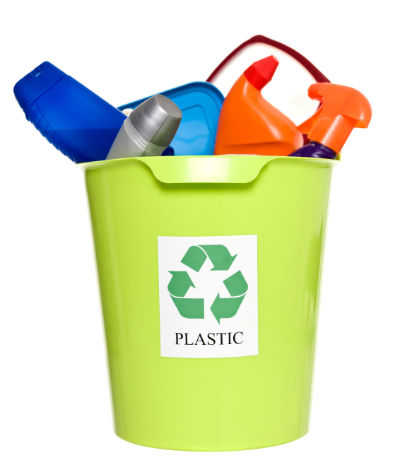I have wondered for years what those little numbers on the bottom of my shampoo bottle mean. I have heard that not all plastics are recyclable, but it seems like most people just throw everything plastic in the recycling bin and cross their fingers. Unfortunately, not all those empty jugs, containers and bottles make it to a reincarnated state. Here is a comprehensive breakdown of the different recycling numbers for plastics so you can make the best choices before purchasing the product.
This is considered the miscellaneous plastic category. The most common products made with #7 are sunglasses, 5-gallon water containers, computer cases, nylon and signs. Most curbside recycle programs will discard this type of plastic. If you are persistent and determined to recycle products made from #7 plastics, you can contact your local recycling facility to discover where you can recycle your items, or use 1-800-RECYCLING’s recycling location search for a place near you.
Check on the bottom of all your containers before throwing them in your recycle bin. Just because they’re plastic and the curbside recycling truck picks them up doesn’t mean they will actually be recycled. Knowing the different types of plastic numbers and their meanings is the first step to ensuring your plastics items will be recycled.
Plastic #1 — PET or PETE (polyethylene terephthalate)
This plastic is easily recycled when placed for curbside pick-up. Most of the containers made with this type of plastic are water bottles, soda bottles, salad dressing containers and plastic food jars (think peanut butter). Plastic #1 items are typically recycled into carpet, clothing fibers, furniture and other great products. Although this plastic is easily recycled, it is estimated that only about 20% of it is actually recycled, according to the Organic Consumers Association.Plastics #2, #5 and #6 — HDPE, PP and PS (high-density polyethylene, polypropylene, polystyrene)
These common plastics are found in your home in almost every plastic container. They are used to make milk and juice containers; egg cartons; medicine containers; CD cases; household cleaners such as bleach, detergent and dish soap; butter containers and your shampoo and conditioner bottles. Most of these containers can easily be recycled and are typically received through your curbside pick-up program. Once recycled, these items become pens, tile, pipes, fences, carryout containers, egg cartons, tables and bottles.Plastic #3 — PVC (polyvinyl chloride)
Plastic #3 is typically mixed in with other plastics to create certain types of medical equipment, household bottles, pipes and windows. This type of plastic is rarely recycled and is not accepted by most municipal recycling programs.Plastic #4 — LDPE (low-density polyethylene)
This plastic is used commonly to make plastic shopping bags. Most communities do not accept this as a recyclable plastic, but it is recyclable. The best way to ensure this type of plastic is recycled is to return your shopping bags to a grocery store that accepts used bags. If this type of plastic is recycled, it is used to make envelopes, trash bags, lumber and house paneling.